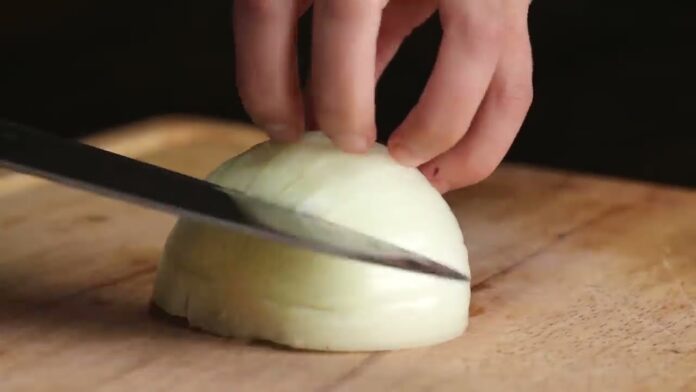Cooking is an art form that requires a deep understanding of various techniques and skills. As a chef or home cook, mastering these techniques can elevate your culinary creations and unlock a world of flavors and textures. In this comprehensive guide, we will explore the essential cooking techniques that every aspiring chef should have in their arsenal.
Introduction
Cooking is a fundamental life skill that not only nourishes our bodies but also feeds our souls. It is a creative outlet that allows us to experiment with flavors, textures, and presentation. Mastering cooking techniques is the key to unlocking the full potential of your culinary abilities, whether you’re a professional chef or a passionate home cook.
Importance of Mastering Cooking Techniques

Cooking techniques are the foundation of any successful culinary endeavor. By understanding and applying these techniques, you can:
- Enhance the flavor and texture of your dishes
- Improve your efficiency and time management in the kitchen
- Expand your culinary repertoire and become more versatile
- Impress your guests with your culinary expertise
- Develop a deeper appreciation for the art of cooking
Knife Skills

Knife skills are the cornerstone of any successful cooking endeavor. Mastering the art of using a knife can greatly improve your efficiency, precision, and overall cooking experience.
Proper Knife Grip and Handling
- The correct knife grip involves placing your thumb and index finger on either side of the blade, with your remaining fingers wrapped around the handle.
- Maintain a firm and controlled grip, but avoid gripping the knife too tightly, as this can lead to fatigue and decreased dexterity.
- Practice proper knife handling by keeping your fingers curled back and the knife blade pointed away from your body.
Cutting Techniques
- The basic cutting techniques include dicing, mincing, julienning, and slicing.
- Dicing involves cutting ingredients into small, even cubes, while mincing creates even smaller pieces.
- Julienning produces long, thin strips, and slicing creates flat, even pieces.
- Experiment with different cutting techniques to achieve the desired texture and appearance for your dishes.
Knife Sharpening and Maintenance
- Regularly sharpening your knives is essential for maintaining their efficiency and precision.
- Use a sharpening steel or a whetstone to hone your blades, following the manufacturer’s instructions.
- Properly store your knives to prevent damage and ensure their longevity.
Heat Control
Mastering heat control is crucial for achieving the perfect doneness and texture in your dishes. Understanding the various heat sources and how to manage them can make a significant difference in the outcome of your culinary creations.
Stovetop Cooking
- Familiarize yourself with the different heat settings on your stove, from low to high, and how they affect the cooking process.
- Experiment with techniques like searing, sautéing, and simmering to achieve the desired results.
- Learn how to adjust the heat to prevent overcooking or undercooking your ingredients.
Oven Techniques
- Understand the different types of ovens (convection, conventional, etc.) and how they affect the cooking process.
- Develop a keen sense of when to use high, medium, or low oven temperatures to achieve the perfect results.
- Experiment with techniques like roasting, baking, and broiling to expand your culinary repertoire.
Mastering the Grill
- Understand the differences between direct and indirect heat, and how to use them effectively.
- Develop a feel for the optimal grill temperature and cooking times for various meats, vegetables, and other ingredients.
- Learn techniques like searing, grilling, and smoking to impart unique flavors to your dishes.
Flavor Balancing
Balancing flavors is an essential skill that separates good cooks from great ones. Understanding how to harmonize different taste profiles can elevate your dishes and create a truly memorable culinary experience.
Understanding the Five Basic Tastes
- Familiarize yourself with the five basic tastes: sweet, sour, salty, bitter, and umami.
- Learn how to identify these tastes in your ingredients and how to balance them to create a well-rounded flavor profile.
- Experiment with different combinations of these tastes to discover new and exciting flavor profiles.
Seasoning Techniques
- Develop a keen understanding of when and how to use different seasonings, such as salt, pepper, herbs, and spices.
- Learn how to adjust seasoning levels throughout the cooking process to ensure a consistent and balanced flavor.
- Explore the use of acid (such as lemon juice or vinegar) to brighten and balance your dishes.
Layering Flavors
- Understand the importance of building layers of flavor in your dishes, starting with a solid foundation and adding complementary ingredients.
- Learn how to use techniques like marinating, brining, and infusing to impart complex flavors.
- Experiment with different flavor combinations to discover new and exciting taste profiles.
Texture Techniques
Texture is a crucial element of any dish, and mastering various texture techniques can elevate your culinary creations to new heights.
Achieving Crispy Textures
- Understand the science behind creating crispy textures, such as the role of moisture and temperature.
- Explore techniques like breading, frying, and roasting to achieve the perfect crispy finish.
- Experiment with different batters and coatings to discover unique textures and flavors.
Creating Creamy Textures
- Learn the art of thickening sauces and soups using techniques like roux-making and emulsion.
- Explore the use of dairy products, such as cream, cheese, and butter, to create rich and creamy textures.
- Experiment with plant-based thickeners, such as purées and nut butters, for dairy-free options.
Developing Chewy Textures
- Understand the role of gluten development in creating chewy textures, particularly in baked goods.
- Explore techniques like kneading, proofing, and shaping to achieve the perfect chewy texture.
- Experiment with different flours, hydration levels, and baking methods to discover new and unique chewy textures.
Plating and Presentation
The way you present your dishes can significantly impact the overall dining experience. Mastering plating and presentation techniques can turn a good dish into a visually stunning masterpiece.
Plate Composition and Balance
- Understand the principles of plate composition, such as symmetry, contrast, and visual flow.
- Learn how to arrange your ingredients on the plate to create a visually appealing and balanced presentation.
- Experiment with different plate shapes, sizes, and materials to find the best fit for your culinary creations.
Garnishes and Decorations
- Explore the use of garnishes, such as fresh herbs, edible flowers, and micro-greens, to add color and texture to your dishes.
- Learn techniques for creating intricate decorations, such as food sculptures, swirls, and patterns, to impress your guests.
- Understand the importance of using garnishes and decorations sparingly, as they should complement and enhance the dish, not overpower it.
Plating Techniques
- Master various plating techniques, such as layering, drizzling, and stacking, to create visually stunning presentations.
- Learn how to use sauces, purees, and other liquids to create intricate designs and add depth to your plates.
- Experiment with different plating styles, such as family-style, individual portions, and shared plates, to suit the occasion and your dining concept.
Practice and Experimentation
Mastering cooking techniques is an ongoing journey that requires practice, experimentation, and a willingness to learn.
Developing a Curious and Inquisitive Mindset
- Approach the kitchen with a mindset of curiosity and a thirst for knowledge.
- Embrace the process of trial and error, and be open to learning from your mistakes.
- Seek out resources, such as cookbooks, online tutorials, and hands-on classes, to expand your culinary knowledge.
Consistent Practice and Repetition
- Regularly practice the techniques you’ve learned to build muscle memory and refine your skills.
- Seek out opportunities to apply your skills in different contexts, such as preparing meals for family and friends.
- Continuously challenge yourself by attempting new recipes and techniques to keep your skills sharp.
Embracing Creativity and Experimentation
- Encourage yourself to step outside your comfort zone and experiment with new ingredients, flavor combinations, and cooking methods.
- Cultivate a mindset of creativity and innovation, and be willing to take risks in the kitchen.
- Celebrate your successes and learn from your failures, as they are all part of the journey towards culinary mastery.
Conclusion
Mastering cooking techniques is a never-ending journey that requires dedication, practice, and a willingness to learn. By embracing the principles and techniques outlined in this guide, you can unlock a world of culinary possibilities and elevate your cooking to new heights.
Remember, the true joy of cooking lies not only in the final product but also in the process of discovery, experimentation, and the creation of unforgettable culinary experiences. Embark on this journey with an open mind, a curious spirit, and a passion for the art of cooking, and you will be well on your way to becoming a true master in the kitchen.









